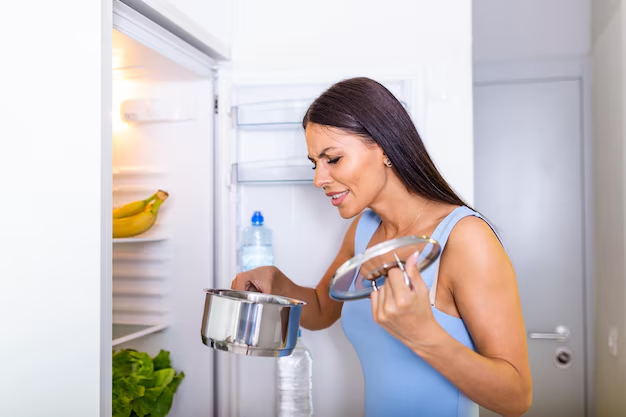Is It Safe to Put Hot Food Directly into the Refrigerator?
We've all been there: finishing a delicious homemade meal and being left with steaming leftovers. As you ponder what to do with these tasty remnants, a question may arise—should hot food go straight into the refrigerator, or is it better to let it cool first? Conventional wisdom and expert advice vary, leaving many unsure about the best course of action. This article explores the science, safety, and recommendations around storing hot food in the refrigerator, providing clear guidance on how to handle those post-dinner dilemmas.
The Science Behind Refrigerating Hot Food
Understanding Temperature Danger Zones
At the heart of the debate lies the concept of the temperature danger zone, a range from 40°F to 140°F where bacteria multiply rapidly. When food remains within this zone for too long, the risk of bacterial growth increases significantly, potentially leading to foodborne illnesses. Therefore, rapidly passing through this danger zone can help minimize the risk of spoilage and contamination.
The Role of Refrigeration
Refrigerators are designed to keep food at a safe temperature below 40°F, significantly slowing down bacterial growth. However, introducing hot food can initially raise the appliance’s internal temperature, impacting the efficiency of the cooling process for all stored items. Hence, understanding when and how to introduce hot food is crucial for both safety and appliance performance.
Should You Wait Before Refrigerating?
Cooling Food Safely
One approach suggests allowing food to cool to room temperature before storing it in the refrigerator. This strategy aims to prevent a sudden temperature change inside the appliance. However, leaving food out for extended periods can also keep it within the danger zone, exacerbating the risk of bacterial growth.
Tip: Aim to cool cooked food rapidly to avoid lengthy exposure to ambient temperatures. Sprucing up your techniques for quick cooling can make all the difference.
Rapid-Cooling Techniques
- Divide and Conquer: Split large portions into shallow containers to speed up cooling.
- Use an Ice Bath: Submerge containers in ice water to swiftly lower temperature.
- Stirring: For soups and stews, frequent stirring can distribute heat evenly, promoting faster cooling.
Potential Risks of Placing Hot Food Directly into the Fridge
Impact on Refrigerator Efficiency
Placing hot food directly in the fridge can raise the internal temperature, putting stress on the appliance as it works to return to its optimal setting. This can lead to increased energy consumption and higher utility bills, potentially shortening the appliance's lifespan over time.
Affecting Stored Items
Hot food can elevate the temperature surrounding other refrigerated items. This may result in uneven cooling, possibly compromising the quality and safety of nearby perishables, especially dairy products and meats.
Professional Perspectives: What Do the Experts Say?
Food Safety Authorities
Guidelines from food safety organizations often prioritize minimizing time in the danger zone. Many recommend storing food in refrigeration within two hours of cooking, emphasizing rapid cooling techniques for safer storage.
Industry Insights
From chefs to restaurant managers, efficiency without compromising safety is key. Many culinary professionals prefer quick-cooling methods and immediate refrigeration of smaller portions, ensuring that food safety standards are met without undue burden on kitchen practices.
Practical Solutions for Home Kitchens
Utilizing the Right Tools
Incorporating some simple kitchen gadgets can make rapid cooling easier:
- Cooling Racks: Elevate heat-retaining casseroles and roasts to encourage airflow.
- Shallow Containers: These maximize surface area, facilitating quicker cooling.
- Food Thermometers: Monitor internal temperatures crucially to ensure rapid passage through the danger zone.
Customizing Your Approach
Every kitchen operates differently, but personalizing a routine based on your common meal types, cooking methods, and fridge capacity can streamline the storage process, enhancing both safety and appliance longevity.
Key Takeaways and Tips
Let's summarize with a strategic guide to safe food storage practices. 🌟
- 🏠 Home Strategy: Tailor cooling techniques to your kitchen's workflow to expedite the process efficiently.
- 🌡️ Temperature Monitoring: Implement thermometers to track food and refrigerator temperatures for optimal safety.
- ⏱️ Timing is Everything: Aim for refrigeration within two hours of cooking using efficient cooling methods.
- 📦 Packaging: Use shallow containers or slicable portions to allow rapid heat dispersion.
- 🧊 Ice Bath Innovation: Embrace quick-cooling techniques such as ice baths for soups and stews to swiftly lower temperatures.
Making the Best Choice for Your Kitchen
Ultimately, whether to refrigerate hot food directly or let it cool first can depend on a variety of factors including specific food types, kitchen resources, and personal preferences. By understanding the principles of food safety, utilizing effective cooling strategies, and protecting your refrigerator from undue strain, you can enjoy delicious leftovers worry-free.
While each kitchen may adopt slightly different approaches, ensuring that you minimize the risk of foodborne illnesses while maintaining energy efficiency is a universal priority. Armed with this knowledge, you can navigate mealtime leftovers with confidence, knowing that both your health and appliances are safeguarded.
